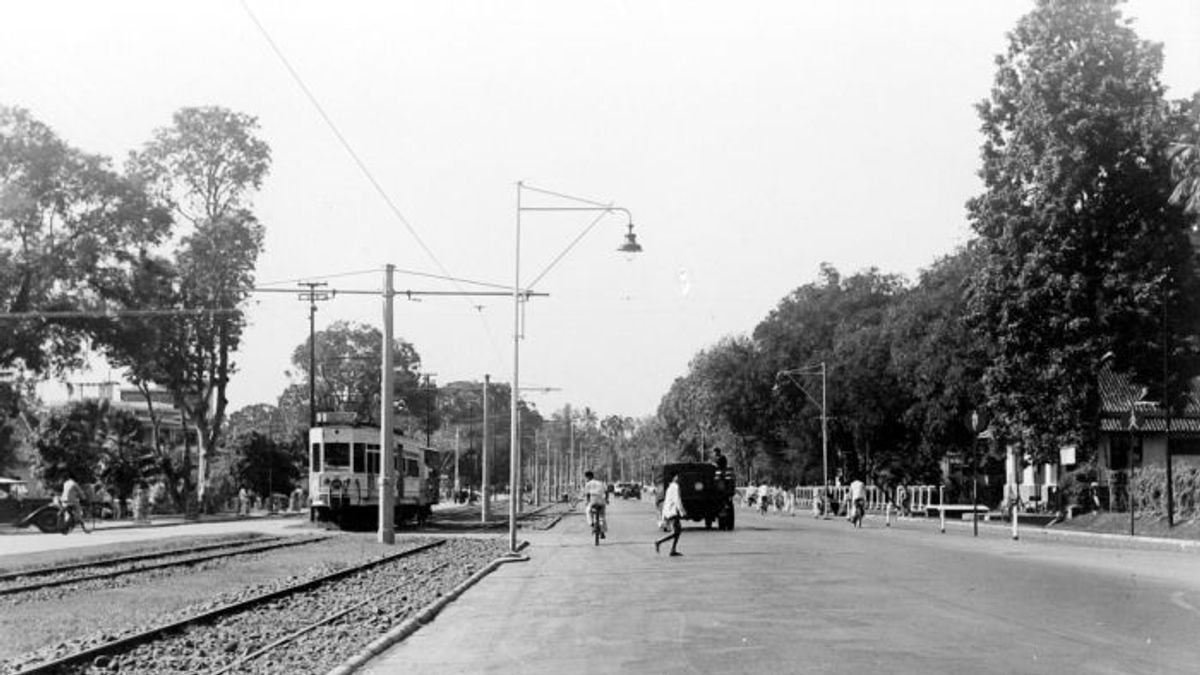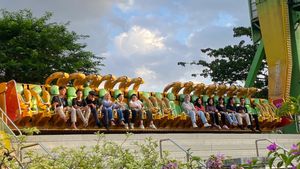JAKARTA - Today 80 years ago, on March 15, 1942, Japan succeeded in taking over the Dutch-owned electric tram company, Batavia Electrische Tram Maatschappij (BETM) in Batavia. The mastery of the "transportation of a million people" was a follow-up to Japan's victory over the Dutch East Indies. Therefore, things that smelled of the Netherlands began to be eliminated by Japan. Including the Dutch racist rules in the form of class division in the tram. For Japan, there is nothing that can differentiate between bumiputra and other ethnic groups.
Tram was once the favorite mass transportation in Batavia. Its presence signifies the progress of the times. The first tram transportation system adopted was the horse-powered tram in 1869, followed by the steam-powered tram in 1882. Then, the Netherlands began to adopt electric trams in 1899.
The manufacturer is not half-hearted. Most of the manufacturing materials are imported directly from abroad. the trajectory (lijn) is made complete. In other words, almost the entire area of Batavia is traversed by trams. Another advantage is the schedule of the operation of the tram itself. People are made to not have to wait long. Because every 10 minutes the tram comes.

This practice made the tram even more famous. Praise also accompanied his presence. From officials to Dutch rulers. They call this rail-based public transportation a form of human victory over distance and time.
"The most useful of the present inventions, the most admirable triumph by man over time and distance, the most powerful incentives for hard work, the exchange of values and civilization," said Indsich Genootschap quoted by Rudolf Mrazek in Engineers of Happy Land: Perkembangan Teknologi dan Nasionalisme di Sebuah Koloni (2006).
It is possible that mass transportation technology has developed far. But not with the conscience of the Dutch. Just like steam trams, electric trams contributed to perpetuating the racist rules that divided the class between the natives and the Dutch.
The Dutch have always placed their race as first-class citizens. While those outsides of Europe (foreign eastern: Chinese, Arab, and others), are considered second-class citizens. And worst of all, the bumiputras are often placed in the lowest strata. Even equated with livestock.

However, all that changed when Japan had controlled Indonesia since March 8, 1942. Japan moved quickly to control all important sectors of the former Dutch East Indies government. Trams, for one. The Japanese officially took over the tram on March 15, 1942. The BETM company was then changed to Seibu Riyoku Kiko Shinden. After that, Japan abolished class rules in trams. Japan considers all humans equal. Nothing is different.
“During the Japanese occupation of Jakarta, tram operations continued, although they did not run as well as during the Dutch East Indies administration. Several lijns during the Japanese occupation were not operational, due to the exploitation of tram rails aimed at meeting Japanese military needs.”
"The Japanese military government in Jakarta did not focus on building city facilities and infrastructure, but the Japanese had a positive impact through propaganda and eliminating things that had a Dutch smell. Thanks to Japan's contribution, the class division system on trams that placed the natives in the lowest strata during the Dutch East Indies era was successfully abolished," concluded Mohamad Syauqi Hadzami in his thesis entitled Transportasi Trem di Batavia 1942-1962 (2017).
*Read other information about TODAY'S HISTORY or read other interesting articles from Detha Arya Tifada.
VOIR éGALEMENT:
The English, Chinese, Japanese, Arabic, and French versions are automatically generated by the AI. So there may still be inaccuracies in translating, please always see Indonesian as our main language. (system supported by DigitalSiber.id)

















